INDIAN INSTITUTE OF TECHNOLOGY BHUBANESWAR
Indian Institute of Technology Bhubaneswar (IITBBS) was set up by the Government of India in 2008. Currently, the Institute has 581 students in the Bachelor of Technology programme in Civil Engineering, Computer Science & Engineering, Electrical Engineering, Mechanical Engineering and Metallurgical & Materials Engineering along with 140 M. Sc., 124 M. Tech. and 181 Ph. D. with a total of 1026 students. In the academic year 2016-17, the Institute is offering following B. Tech. & Dual Degree Pogrammes
The Institute promotes a border-less interdisciplinary academic environment to encourage the academic staff and students to work together through the concept of Schools. Currently, the Institute has School of Basic Sciences; School of Earth, Ocean and Climate Sciences; School of Electrical Sciences; School of Humanities, Social Sciences and Management; School of Infrastructure; School of Mechanical Sciences and School of Mineral, Metallurgical and Materials Engineering.
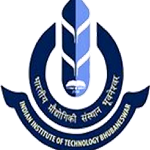
Contact address
IIT BHUBANESWAR
Samantapuri (Rearside of Hotel Swosti Plaza)
Bhubaneswar-751 013
: +91 674 2301 982
: +91 674 2301983
: mailto : registrar@iitbbs.ac.in
Indian Institute of Technology Bhubaneswar
Bhubaneswar-751 013
: mailto : director.office@iitbbs.ac.in
Web Address : www.iitbbs.ac.in
Courses Offered and the number of Seats allocated in each Branch
4 year B. Tech
- Civil Engineering40
- Computer Science and Engineering40
- Electrical Engineering40
- Mechanical Engineering40
- Metallurgical and Materials Engineering20
- Electronics & Communication Engineering40
5 year Dual Degree programmes
- B. Tech in Mechanical Engineering and M. Tech. in Mechanical System Design10
- B. Tech in Mechanical Engineering and M. Tech. in Thermal Science & Engineering)10
- B. Tech in Civil Engineering and M. Tech. in Structural Engineering10
- Mechanical Engineering40
- Metallurgical and Materials Engineering20
- B. Tech in Civil Engineering and M. Tech. in Transportation Engineering10
INDIAN INSTITUTE OF TECHNOLOGY BOMBAY
Indian Institute of Technology Bombay (IIT Bombay) was established in 1958, with the cooperation and participation of the then Government of USSR under UNESCO's technical assistance program. It celebrated its Golden Jubilee in the year 2008-09. During these 50+ years, IIT Bombay has gained reputation for the quality of its faculty and the outstanding calibre of the students graduating from its undergraduate and postgraduate programs. Today, the Institute is recognized as a centre of academic and research excellence offering engineering, science, management and humanities education on par with the best in the world.
Located at Powai, in the metropolitan city of Mumbai, the industrial and economic capital of India, the IIT campus extends over 500 acres of verdant land, nestled between hills and flanked by Powai and Vihar lakes. The Institute has well-equipped laboratories and workshops, and also excellent computational facilities in all the academic units in addition to a central Computer Centre. It also houses one of the finest technical libraries in the country. About 3900+ students are on roll in the undergraduate programs and 5100+ in the postgraduate (including Doctoral) programs. This includes a number of foreign students. The faculty strength is about 550-600.

Contact address
Powai, Mumbai
Postcode 400076
Maharashtra, INDIA
Phone : +91-22-2572-2545
Fax : +91-22-2572-3480
Web Address : http://www.iitb.ac.in/
Courses Offered and the number of Seats allocated in each Branch
4 year B. Tech
- Aerospace Engineering62
- Chemical Engineering124
- Civil Engineering117
- Computer Science and Engineering110
- Electrical Engineering60
- Engineering Physics30
- Mechanical Engineering116
- Metallurgical Engineering and Materials Science98
5 year Dual Degree programmes
- Electrical Engineering with M.Tech. in Communications and Signal Processing32
- Electrical Engineering with M.Tech. in Microelectronics32
- Energy Engineering with M.Tech. in Energy Systems Engineering30
- Engineering Physics and M.Tech. with specialization in Nano Science12
- Mechanical Engineering and M.Tech. in Computer Integrated Manufacturing22
- Metallurgical Engineering and Materials Science with M.Tech. in Ceramics and Composites13
- Metallurgical Engineering and Materials Science with M.Tech. in Metallurgical Process Engineering13
- BS-Chemistry32
INDIAN INSTITUTE OF TECHNOLOGY DELHI
Established as a College of Engineering in 1961, this Institute was declared as Institution of National Importance under the Institutes of Technology (Amendment) Act 1963 and was renamed as Indian Institute of Technology Delhi. It was then accorded the status of a university with powers to decide its own academic policies, to conduct its examinations, and to award its degrees. IIT Delhi is situated at Hauz Khas in South Delhi, bounded by Sri Aurobindo Marg on the east, Jawaharlal Nehru University complex on the west, National Council of Educational Research and Training on the south, and the Outer Ring Road on the north. The Institute campus is about 20 km from lndira Gandhi International Airport, 10 km from domestic terminal of the airport, 19 km from Delhi main Railway Station and 14 km from New Delhi Railway Station. The Institute campus extends over an area of 320 acres with many topographical features, imaginatively laid out with picturesque landscape. With clean and wide roads, the campus presents a spectacle of harmony in architectural and natural beauty.
Most of the students, faculty and staff reside on the campus. The main academic building houses various teaching and research facilities. Although each department is a separate entity, all the departments together constitute an integrated complex. Each academic year consists of two semesters and a summer term. The education system is organized around a credit system, which ensures continuous evaluation of a students performance and provides flexibility to choose courses so as to facilitate progress at an optimum pace suited to ones ability or convenience. Each course is assigned certain number of credits depending upon the class contact hours. A minimum number of credits are to be completed in order to qualify for the award of degree. IIT Delhi has revised its curriculum with effect from academic session 2013-2014.
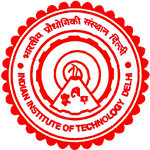
Contact address
Hauz Khas, New Delhi-110 016, INDIA
: mailto : webmaster@admin.iitd.ac.in
Web Address : http://www.iitd.ac.in/
Courses Offered and the number of Seats allocated in each Branch
4 year B. Tech
- Biotechnology and Biochemical Engineering45
- Chemical Engineering75
- Civil Engineering105
- Computer Science and Engineering68
- Electrical Engineering75
- Electrical Engineering (Power and Automation)45
- Engineering Physics60
- Mathematics and Computing36
- Mechanical Engineering68
- Production and Industrial Engineering67
- Textile Technology105
5 year Dual Degree programmes
INDIAN INSTITUTE OF TECHNOLOGY GANDHINAGAR
IIT Gandhinagar strives to offer the best undergraduate engineering education in India with unmatched innovations in curriculum. All new undergraduate students undergo a five-week Foundation Programme designed to nurture creativity, communication skills, ethics, teamwork, social engagement and physical fitness. To promote critical thinking and an appreciation of the interdisciplinary character of knowledge, students take almost 20% of their coursework in the humanities and social sciences - nearly twice the proportion of other leading engineering colleges in the country - as well as courses in design and the life sciences. We empower our students to discover and pursue their passion with a very liberal branch change policy, dual major and dual degree programmes, an emphasis on project based learning and options for honors/minors.
IIT Gandhinagar (IITGN) has moved to its permanent campus on the banks of the Sabarmati river near the twin cities of Ahmedabad and Gandhinagar. The first phase of constructions is completed and includes well-furnished hostels, classrooms, library, laboratories, auditoriums, social and interactive spaces, playgrounds, faculty and staff housing, a few shops and other basic infrastructure. With over 3 kilometers of river front, a combination of ravine landscape and flat areas of land, a rich biodiversity, earthquake-resistant confined-masonry construction, the IITGN campus has numerous unique aspects to boast about.

Contact address
Village Palaj, Simkheda, Gandhinagar, Gujarat
India - 382355.
Web Address : http://www.iitgn.ac.in/
Courses Offered and the number of Seats allocated in each Branch
4 year B. Tech
INDIAN INSTITUTE OF TECHNOLOGY GUWAHATI
Indian Institute of Technology Guwahati, the sixth member of the IIT fraternity, was established in 1994. The academic programme of IIT Guwahati commenced in 1995.
Situated on the north bank of the majestic river Brahmaputra, the Institute campus is spread over 700 acres and has been planned taking full advantage of the natural features of the terrain, which consists of several hillocks and lakes. It is arguably one of the most beautiful campuses in India. The campus is about 20 km from the railway station and about 18 km from the airport. Institute bus services ply regularly, to and from the city centre (near Guwahati railway station). Taxis and three wheelers are also available at the railway station. A pre-paid taxi service is available at the airport to go to the Institute.
The weather remains pleasant for most part of the year with a maximum day temperature in summers of around 35 0C and a minimum temperature in the winters of around 7 0C. Guwahati is the gateway to the north eastern region of India, and is well connected by rail and air to all major cities like Delhi, Mumbai, Kolkata, Bangalore, Chennai, Hyderabad, Lucknow, Jaipur etc. All major domestic airlines operate regular flights from Guwahati to all major cities in the country.

Contact address
Indian Institute of Technology Guwahati
Guwahati 781039
Assam, India
Prof. Gautam Biswas, FNA
: +91 - 361 - 2690401 (O)
: +91 - 361 - 2692321
: mailto : director@iitg.ernet.in
Dr. Brajendra Nath Raychoudhury
IIT Guwahati, Guwahati 781039
: +91 - 361 - 2690761 (O)
: +91-361-2690762
: mailto : registrar@iitg.ernet.in
: +91 - 361 - 2583000
: +91 - 361 - 2690762
: mailto : pro@iitg.ernet.in
Web Address : http://www.iitg.ac.in/
Courses Offered and the number of Seats allocated in each Branch
4 year B. Tech
INDIAN INSTITUTE OF TECHNOLOGY HYDERABAD
Indian Institute of Technology Hyderabad (IITH) was established in the year 2008. IIT Hyderabad has student strength of around 1900 - 802 B.Tech, 97 M.Sc, 398 M.Tech, 22 M.Des, 8 M.Phil and 547 Ph.D. IITH aims to train well-rounded engineers who are ready to tackle the real-world problems. In a short period of time, IIT Hyderabad has emerged as a prestigious institute of higher learning producing students of great caliber. IITH is creating a unique holistic educational ecosystem that will foster interactive learning, cutting edge research, strong industry collaboration, and entrepreneurship. It is providing an environment wherein students and faculty are not afraid to experiment and celebrate their ideas. As per the latest ranking released by MHRD, IIT Hyderabad stands at 7th place among the technical institutions of India.
The Institute has a futuristic permanent campus of about 570 acres near Kandi in Medak, about 60 minutes' drive from the Rajiv Gandhi International Airport, Shamshabad, and 45 minutes' drive from Gachibowli. The campus buildings are designed by world renowned architects and have the ultramodern aesthetics with world class amenities. The hostels have a very unique architecture, making it more of a dwelling rather than a student hostel. IITH has a vibrant student gymkhana that oversees all the aspects of the students' life during their stay at IIT Hyderabad.

Contact address
Ordnance Factory Estate
Yeddumailaram 502205
Telangana, INDIA
Web Address : http://www.iith.ac.in/
Courses Offered and the number of Seats allocated in each Branch
4 year B. Tech
INDIAN INSTITUTE OF TECHNOLOGY INDORE
Foundation stone of IIT Indore was laid on 17th Feb 2009 at Simrol while its academic programs commenced from July 2009 in a rented premises at Institute of Technology (IET) of Devi Ahilya Vishvavidalya (DAVV) Indore. IIT Indore was mentored by IIT Bombay till its founding Director Prof. Pradeep Mathur took charge on 1st Jan. 2010. From the academic year 2010-11 onwards, it developed its own curriculum for its different UG and PG programs. As the institute grew exponentially in its formative years, it has to rent another campus in Pithampur Auto Cluster Ltd (PACL) premises to meet growing needs of teaching and research activities of various Engineering disciplines.
The institute has shifted all academic and research facilities and activities to its permanent campus at Simrol in December 2015 completely vacating its rented campuses at IET and PACL. IIT Indore aims to play an active role in the task of propelling India on her growth-trajectory by focusing on very high quality education, research, development, consultancy and manpower training.
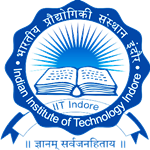
Contact address
M & E Block
Khandwa Road,Indore, MP
India, PIN: 452017
Phone : +91-0731-2438717
Web Address : http://www.iiti.ac.in/
Courses Offered and the number of Seats allocated in each Branch
4 year B. Tech
INDIAN INSTITUTE OF TECHNOLOGY KANPUR
IIT Kanpur is reputed all over the world for its innovative academic programmes stressing science-based engineering education. Since its inception in 1960, the Institute is engaged in carrying out original research of significance and technology development at the cutting edge. It offers students an exciting academic experience with opportunities to pursue interdisciplinary programmes and collaborative research within the Institute as well as through various exchange programmes with institutes across the world. In addition, a vibrant array of co-curricular and extra-curricular activities provides students with a holistic educational experience that enables our student to succeed in a wide range of professions after graduation.
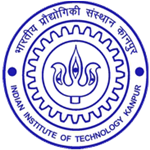
Contact address
IIT BHUBANESWAR
Samantapuri (Rearside of Hotel Swosti Plaza)
Bhubaneswar-751 013
: mailto : jee@iitk.ac.in
: 0512-259 7470, 7412, 7304
: mailto : chrgate@iitk.ac.in
Vice Chairman
: 0512-259 7470
: mailto : vchrgate@iitk.ac.in
Web Address : http://www.iitk.ac.in//a>
Courses Offered and the number of Seats allocated in each Branch
4 year B. Tech
- Aerospace Engineering50
- Biological Sciences and Bioengineering40
- Chemical Engineering75
- Civil Engineering105
- Computer Science and Engineering85
- Electrical Engineering13085
- Materials Science and Engineering60
- Mechanical Engineering100
- Chemistry35
- Economics38
- Mathematics and Scientific Computing49
- Physics30
- Earth Sciences30
INDIAN INSTITUTE OF TECHNOLOGY KHARAGPUR
The motto of IIT Kharagpur is "Yoga Karmashu Kaushalam" . The motto literally translates to "Excellence in action is Yoga" essentially implying that doing your work well is (true) yoga. It is sourced to Sri Krishna's discourse to Arjuna in Bhagavad Gita. This quote in its larger context of Gita urges man to acquire equanimity because such a soul endowed with the mind of equanimity allows him to shed the effects of his good and evil deeds in this world itself. Equanimity is the source of perfection in Karmic endeavors while leading to Salvation.
The Indian Institute of Technology Kharagpur was founded in 1951. A forerunner of the other IITs, and in many ways a role model for them, IIT Kharagpur has been producing scientists and technologists of the highest calibre who continue to provide leadership in education, research, industry, and management. Many of its alumni are illustrious men and women whose achievements command admiration and respect everywhere and evoke a just sense of pride in the IIT community.

Contact address
Kharagpur
India - 721302
Phone : +91-3222-255221
Web Address : http://www.iitkgp.ac.in/
Courses Offered and the number of Seats allocated in each Branch
4 year B. Tech
- Aerospace Engineering33
- Agricultural and Food Engineering36
- Biotechnology and Biochemical Engineering27
- Chemical Engineering52
- Civil Engineering62
- Computer Science and Engineering55
- Electrical Engineering55
- Electronics and Electrical Communication Engineering62
- Instrumentation Engineering32
- Manufacturing Science and Engineering29
- Mechanical Engineering67
- Metallurgical and Materials Engineering44
- Mining Engineering40
- Ocean Engineering and Naval Architecture33
- Industrial and Systems Engineering29
- Architecture (5 Years)40
- Aerospace Engineering19
5 year Dual Degree Programs
- Agricultural and Food Engineering with M.Tech. in any of the listed specializations (5 Years DD)34
- Biotechnology and Biochemical Engineering (5 Years DD)26
- Chemical Engineering (5 Years DD)27
- Civil Engineering with any of the listed specialization (5 Years DD)22
- Computer Science and Engineering (5 Years DD)40
- Electrical Engineering with M.Tech. in any of the listed specializations (5 Years DD)22
- Electronics and Electrical Communication Engineering with M.Tech. in any of the listed specializations (5 Years DD)40
- Industrial Engineering with M.Tech. in Industrial Engineering and Management (5 Years DD)22
- Manufacturing Science and Engineering with M.Tech. in Industrial Engineering and Management (5 Years DD)15
- Mechanical Engineering with M.Tech. in any of the listed specializations (5 Years DD)48
- Metallurgical and Materials Engineering with M.Tech. in Metallurgical and Materials Engineering (5 Years DD)19
- Mining Engineering (5 Years DD)19
- Mining Safety Engineering (5 Years DD)18
- Ocean Engineering and Naval Architecture (5 Years DD)24
- Quality Engineering Design and Manufacturing (5 Years DD)14
- Applied Geology (5 Years Integrated Master of Science)36
- Chemistry (5 Years Integrated Master of Science)34
- Economics (5 Years Integrated Master of Science)45
- Exploration Geophysics (5 Years Integrated Master of Science)34
- Mathematics and Computing (5 Years Integrated Master of Science)50
- Physics (5 Years Integrated Master of Science)37
INDIAN INSTITUTE OF TECHNOLOGY MADRAS
The Indian Institute of Technology Madras (IITM) is among the finest, globally reputed higher technological institutions that have been sensitive and constructively responsive to student expectations and national needs. IITM was founded in 1959 as an 'Institute of National Importance' by Government of India with technical and financial assistance from the Federal Republic of West Germany. IITM celebrated its Golden Jubilee in the year 2008-09. During these 50+ years, IIT Madras has gained reputation for the quality of its faculty and the outstanding caliber of the students in the undergraduate and postgraduate programmes. IITM is recognized as a centre of academic and research excellence offering engineering, science, management and humanities education on par with the best in the world.
IITM campus is famous for its serene and scenic natural environment. Comprising 650 acres of lush green forest, including a large lake and a rich variety of flora and fauna, the campus is the pride of its residents and provides an ideal setting for serious academic and developmental pursuits.
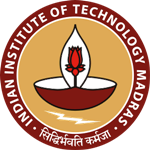
Contact address
IIT P.O., Chennai 600 036
INDIA
Web Address : www.iitm.ac.in
Courses Offered and the number of Seats allocated in each Branch
4 year B. Tech
- Aerospace Engineering45
- Chemical Engineering73
- Civil Engineering63
- Computer Science and Engineering42
- Electrical Engineering66
- Engineering Physics30
- Mechanical Engineering75
- Metallurgical and Materials Engineering36
- Naval Architecture and Ocean Engineering36
- Aerospace Engineering13
5 year Dual Degree Programs
- Aerospace Engineering( 5 Year DD)13
- Biological Engineering( 5 Year DD)34
- Chemical Engineering( 5 Year DD)18
- Civil Engineering( 5 Year DD)35
- Computer Science and Engineering( 5 Year DD)14
- Electrical Engineering( 5 Year DD)53
- Engineering Design ( 5 Year DD)57
- Mechanical Engineering( 5 Year DD)72
- Mechanical Engineering (Product design)( 5 Year DD)24
- Metallurgical and Materials Engineering( 5 Year DD)13
- Naval Architecture and Ocean Engineering( 5 Year DD)18
- Biological Sciences( 5 Year DD)35
- Physics( 5 Year DD)10
INDIAN INSTITUTE OF TECHNOLOGY MANDI (HIMACHAL PRADESH)
Founded in 2009, IIT Mandi is the only IIT located in the Himalayas. IIT Mandi's vision is to be leader in science and technology education, knowledge creation and innovation, in an India marching towards a just, inclusive and sustainable society.
The Institute's main campus, called Kamand Campus, is located in the picturesque Uhl river valley at Kamand, which is situated at about 15 kms from the historic town of Mandi in Himachal Pradesh. Mandi is located at a distance of around 475 km from Delhi and around 200 km from Chandigarh on Delhi-Manali route.
IIT Mandi is the first among new IITs to develop and use its main campus. The move to the main campus which began in July-September 2012 has been steadily gaining momentum. In April 2015, the shifting of all the B.Tech students to the permanent campus in Kamand has been completed and all the major activities of IIT Mandi are now being carried out from Kamand Campus. The residential campus in the serene landscape by the river Uhl offers a world-class academic environment with a high quality of life in a setting of natural splendour. Bus transport facility is available to facilitate the movement of students and faculty between Mandi and Kamand.

Contact address
Registrar's Office
Indian Institute of Technology Mandi
PWD Rest House
Near Bus Stand
Mandi - 175 001, Himachal Pradesh
India
: +91-1905-237943
: +91-1905-237945
: mailto : regis@iitmandi.ac.in
Director's Office
Indian Institute of Technology Mandi
PWD Rest House 2nd Floor
Near Bus Stand
Mandi - 175 001, Himachal Pradesh
India
: +91-1905-237731
: +91-1905-237942
: mailto : diroffice@iitmandi.ac.in
Web Address : http://www.iitmandi.ac.in/
Courses Offered and the number of Seats allocated in each Branch
4 year B. Tech
INDIAN INSTITUTE OF TECHNOLOGY PATNA
Indian Institute of Technology Patna was established by an Act of Parliament in 2008 along with eight new IITs. Initially it was under the mentorship of IIT Guwahati. IIT Patna has successfully created a niche for itself in the area of academics and research within a short span of time. The institute infuses new and fresh energy and vigor in a region that has been a centre of knowledge since ancient times. IIT Patna aims to bring prosperity and enhancement to life through quality and holistic education and pioneering research. With a faculty who have a wide range of academic and research experience, IIT Patna is successfully running B.Tech., M.Tech. and Ph.D. programs in Engineering, Sciences and Humanities and Social Sciences.
From 2016, the institute is going to run MSc in three subjects viz. Physics, Chemistry and Mathematics.The Institute aims to encourage collaborative activities along with leadership skills among students. Students are encouraged to participate in various co-curricular activities and visits to nearby industrial units help in honing their skills and knowledge. The institute aims to take students into a world of discovery, innovation and self-reliance which will lead to inclusive development not only of the individual but also of the society at large. IITP is ranked 10th best engineering institute in the country by NIRF recent nationwide ranking.
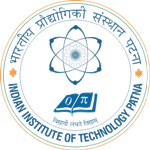
Contact address
Patliputra Colony,
Patna 800 013
Web Address : http://www.iitp.ac.in/
Courses Offered and the number of Seats allocated in each Branch
4 year B. Tech
INDIAN INSTITUTE OF TECHNOLOGY JODHPUR
Indian Institute of Technology Jodhpur was established in 2008. The Institute has established basic academic and infrastructure facilities for teaching and research. At present, IIT Jodhpur operates from its temporary campuses, namely:
- Academic Campus: IIT Jodhpur operates independently from the premises of MBM Engineering College in Jodhpur, situated on the Old Residency Road, Ratanada, about 4 km from the Jodhpur Railway station and 3 km from the Airport.
- Residential Campus: IIT Jodhpur has a residential campus located at GPRA Residential Campus, New Pali Road, Jodhpur, GPRA Campus is located about 17 km from the Academic Campus and accommodates nearly 500 B.Tech. boy and all girl students. Also, it provides accommodation to nearly 150 Faculty Members, Staff Members, and their family members.
IIT Jodhpur will shift in October 2016 to its sprawling state-of-the-art residential permanent campus on 852 acres of land located about 20 km away from the center of the city of Jodhpur on National Highway 65 towards Nagaur, N-NE from the center of Jodhpur. The Permanent Campus of the Institute is the first fully-planned technical institute campus in India. Each student will be provided with a separate hostel room (~80 sft). The room will be air-cooled, and have basic furniture (table, chair, bed and almirah) and Internet connection. The hostel (of 236 rooms) will have games, TV and reading rooms. The dining Hall building will have separate vegetarian and non-vegetarian kitchens & Dining areas, along with a generic food court.
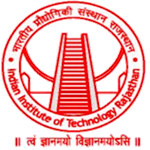
Contact address
Indian Institute of Technology Jodhpur
Old Residency Road, Ratanada,
Jodhpur - 342 011
Web Address : http://www.iitj.ac.in/
Courses Offered and the number of Seats allocated in each Branch
4 year B. Tech
INDIAN INSTITUTE OF TECHNOLOGY ROORKEE
Indian Institute of Technology - Roorkee is among the foremost Institutes of national importance in higher technological education and in engineering, basic and applied research. Since its establishment, the Institute has played a vital role in providing the technical manpower and know-how to the country in pursuit of research. The Institute ranks amongst the best technological institutions in the world and has contributed to all sectors of technological development. It has also been considered a trend-setter in the area of education and research in the field of science, technology, and engineering.

Contact address
Roorkee, Uttarakhand
India - 247667
Web Address : http://www.iitr.ac.in/
Courses Offered and the number of Seats allocated in each Branch
4 year B. Tech
- Biotechnology35
- Chemical Engineering110
- Civil Engineering120
- Computer Science and Engineering75
- Electrical Engineering120
- Electronics and Communication Engineering80
- Mechanical Engineering100
- Engineering Physics30
- Metallurgical and Materials Engineering100
- Polymer Science and Technology35
- Production and Industrial Engineering40
- Architecture(5 Years)35
5 Year Dual Degree Programmes
INDIAN INSTITUTE OF TECHNOLOGY ROPAR
Indian Institute of Technology Ropar started functioning from the academic year 2008-09 from the campus of IIT Delhi, the mentor institute. The Institute currently operates from the premises of Government Polytechnic College for Women in Ropar. The foundation stone laying ceremony was held on 24th February, 2009. Indian Institute of Technology Ropar has been the registered as Society under the Societies' Registration Act 1860 on 29 July, 2009. The transit campus of IIT Ropar was inaugurated on 19 August, 2009. The institute will be relocated to its own campus, spread over an area of 500 acres on the banks of the river Satluj, in July 2017.
The Indian Institute of Technology Ropar is ranked 9th best engineering institute in the latest national rankings. IIT Ropar is committed to provide state-of-the-art technical education in a variety of fields. The Institute is facilitating transmission of knowledge in keeping with the latest developments in pedagogy. At present, the Institute offers Bachelor of Technology at UG level in Computer Science and Engineering, Electrical Engineering, Mechanical Engineering and Civil Engineering programmes; MS-(R), M. Tech., and M.Sc., in Computer Science and Engineering, Electrical Engineering; Mechanical Engineering; and in Physics, Chemistry and Mathematics respectively. In research, all departments are offering PhD Programmes. The Institute has two inter-disciplinary centers on Biomedical Engineering and Materials & Energy Engineering.

Contact address
Phone : (91) 1881-242103 (D), (91) 1881-227079 (Office)
Fax : (91) 1881-223395
Web Address : http://www.iitrpr.ac.in/
Courses Offered and the number of Seats allocated in each Branch
4 year B. Tech
- Civil Engineering25
- Computer Science and Engineering40
- Electrical Engineering40
- Mechanical Engineering40
5 year Dual Degree Programmes
INDIAN INSTITUTE OF TECHNOLOGY (BANARAS HINDU UNIVERSITY), VARANASI
The Indian Institute of Technology (Banaras Hindu University) is situated in the magnificent campus of Banaras Hindu University spread over nearly 1300 acres at the southern end of the ancient city of Varanasi on the bank of the holy river Ganga. The IIT (BHU) formerly known as the Institute of Technology was a part of the Banaras Hindu University, which has been an internationally acknowledged renowned seat of learning. The Banaras Hindu University was founded in the year 1916 by the great visionary and patriot, Mahamana Pandit Madan Mohan Malaviya Ji. This residential University has teaching and research facilities in over 135 diverse disciplines including Ancient History, Oriental Learning, Performing and Fine Arts, Institute of Medical Sciences, Institute of Management Studies, Institute of Sciences, Institute of Environmental and Sustainable Development Social Sciences, etc.
Engineering Education in Banaras Hindu University commenced as early as in 1919 with the establishment of Banaras Engineering College (BENCO). The University has also pioneered engineering education by being the first in the country to start degree courses in Mining, Metallurgy, Ceramic Engineering and Pharmaceutics with the establishment of the College of Mining and Metallurgy and the College of Technology in the years 1923 and 1932 respectively. In 1969 these three colleges were amalgamated to form the Institute of Technology. The Institute of Technology, Banaras Hindu University (IT-BHU), was converted into Indian Institute of Technology (Banaras Hindu University), Varanasi by the Government of India, New Delhi on 29th June, 2012.
_Varanasi.png)
Contact address
VARANASI
Web Address : https://iitbhu.ac.in/
Courses Offered and the number of Seats allocated in each Branch
4 year B. Tech
- Ceramic Engineering59
- Chemical Engineering119
- Civil Engineering80
- Computer Science and Engineering59
- Electrical Engineering80
- Electronics Engineering80
- Mechanical Engineering100
- Metallurgical Engineering69
- Mining Engineering100
- Pharmaceutics69
5 Year Dual Degree Programs
- Biochemical Engineering with M.Tech. in Biochemical Engineering and Biotechnology(5 Year DD)20
- Bioengineering with M.Tech in Biomedical Technology(5 Year DD)20
- Ceramic Engineering(5 Year DD)20
- Civil Engineering with M.Tech. in Structural Engineering(5 Year DD)20
- Computer Science and Engineering(5 Year DD)15
- Electrical Engineering with M.Tech. in Power Electronics(5 Year DD)20
- Material Science and Technology(5 Year DD)20
- Mechanical Engineering(5 Year DD)20
- Metallurgical Engineering(5 Year DD)20
- Mining Engineering(5 Year DD)20
- Engineering Physics(5 Year Integrated Masters)20
- Industrial Chemistry(5 Year Integrated Masters)20
- Mathematics and Computing(5 Year Integrated Masters)20
- Pharmaceutics(5 Year Integrated Masters)20
INDIAN SCHOOL OF MINES, DHANBAD
The Indian School of Mines (ISM) was established by the Government of India in 1926 on the pattern of Royal School of Mines, London to teach Mining Engineering and Applied Geology to provide manpower for the Indian Mineral Industry and the concerned departments of the Government. Subsequently in 1957, Petroleum Engineering and Applied Geophysics disciplines were also added. In due recognition of its vital role in the service of the mineral exploration and mining sectors of the national economy, ISM was granted autonomy by the Government of India in 1967; and has been functioning as a Deemed University under the University Grants Commission Act, 1956. In 1996, it came under financial and administrative control of MHRD, Government of India. It has 218 acres of fully residential campus of its own consisting of graceful blend of old and new style buildings. The serene campus comprises academic buildings, separate hostels for boys and girls, faculty & staff quarters, health centre, workshop, Student Activity Centre (SAC), canteen and other infrastructural facilities for its cosmopolitan community.
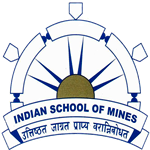
Contact address
Dhanbad - 826004, Jharkhand, India
Phone : +91-326- 2235001-2235004,
Fax : +91-326-2296563
Web Address : http://www.ismdhanbad.ac.in/
Courses Offered and the number of Seats allocated in each Branch
4 year B. Tech
- Chemical Engineering40
- Civil Engineering50
- Computer Science and Engineering103
- Electrical Engineering92
- Electronics and Communication Engineering92
- Engineering Physics22
- Environmental Engineering40
- Mechanical Engineering103
- Mineral Engineering45
- Mining Engineering92
- Mining Machinery Engineering40
- Petroleum Engineering65
- Electronics and Instrumentation Engineering40
5 Year Dual Degree Programs
INDIAN INSTITUTE OF TECHNOLOGY Bhilai (CHHATTISHARH)
The Indian Institute of Technology Bhilai (IIT Bhilai) is a public university located in Bhilai, Chhattisgarh, India was established in 2016. It is one of the six new IITs established by the Ministry of Human Resource Development, Government of India, located in Chhattisgarh state. Until the infrastructure and permanent campus is ready, the institute will start and function temporarily at the campus of Government Engineering College (GEC) Raipur. The state government has allotted 457 acres of land for the new campus. The academic session in IIT Bhilai will commence from August 2016. As the mentor institute, IIT Hyderabad will facilitate the functioning of IIT Bhilai. To begin with, B.Tech. program in three branches will be offered, viz. Computer Science and Engineering, Electrical Engineering and Mechanical Engineering with 40 students in each branch. The permanent campus is adjacent to one of the largest steel plant of India 'Bhilai Steel Plant'. IIT Bhilai Campus will be constructed at Kutelabhatha village, District Durg. This campus is about 7 km from the Durg Junction railway station and about 62 km from the Raipur Airport. In addition, an Extension Center has been planned at Naya Raipur.

Contact address
IIT Bhilai, Government Engineering College Campus, Old Dhamtari Road, Sejbahar, Raipur, Chhattisharh, 492015. Phone : +91-7694042262.
Web Address : www.iith.ac.in/IITBhilai/
Courses Offered and the number of Seats allocated in each Branch
4 year B. Tech
INDIAN INSTITUTE OF TECHNOLOGY Jammu (Jammu & Kashmir)
At the foothills of the Shivalik range of Himalaya, a new institution is being set up in approximately 400 acres in a forest area near Jammu City. The new institution will take shape in a few years time. In the meanwhile, a transit campus is being built at the same site to start the activities of the Institute. The Transit Campus is planned to be equipped to meet all the needs of the students and faculty with class rooms, laboratories, modern hostel buildings for girls and boys and sports facilities. However, in the first year, the Institute will function from a Temporary Campus (KCS Campus), Opposite Janipur Police Station, Paloura, Jammu city. IIT Delhi is the mentor institute for IIT Jammu.

Contact address
Fax : 011-26582153
Web Address : www.iitjammu.ac.in
Courses Offered and the number of Seats allocated in each Branch
4 year B. Tech
INDIAN INSTITUTE OF TECHNOLOGY Palakkad (Kerala)
IIT Palakkad, established in 2015, is dedicated to creating an environment wherein students and faculty can dream, think and innovate to craft a better future for the world. IIT Palakkad is one of the new IITs being mentored by IIT Madras. It is currently functioning from a temporary campus situated in the Ahalia Health Heritage and Knowledge Village, located about 25 km from the Palakkad railway station. With a fully functional academic setting including well-equipped laboratories, class rooms and computing facilities, modern hostels for girls and boys, and sports and fitness amenities, the temporary campus is ideally setup for the bright young minds of our country. A vibrant permanent campus with world-class sustainable green buildings is expected to be ready in a couple of years, occupying 500 acres of land bordering the Sahya mountainous range and adjacent to the Coimbatore-Kanyakumari national highway.
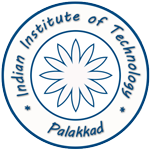
Contact address
Web Address : www.iitpkd.ac.in
Courses Offered and the number of Seats allocated in each Branch
4 year B. Tech
INDIAN INSTITUTE OF TECHNOLOGY Tirupati (Andhra Pradesh)
Indian Institute of Technology Tirupati is the first among the 3rd generation IITs, announced in 2014, to have the foundation stone laid on March 2015. This new IIT started functioning from transit campus in Tirupati from the academic year of 2015. IIT Tirupati has the full support of its mentoring institute, IIT Madras. IIT Tirupati offers academic programs to produce outstanding Engineers, Technologists and Scientists who are capable of addressing the societal needs to enhance the quality of life of people. This is possible with focused academic programs imparting relevant knowledge and skills. Since engineering is applied science, more emphasis would be laid on theoretical knowledge and practice oriented laboratories. Programs are being planned to nurture innovation and creativity, teamwork, communication skills, ethics and societal interaction. With the objective of creating technologists who are conscious of social, environmental and sustainable issues, courses in humanities and social sciences are given due importance in the curriculum.
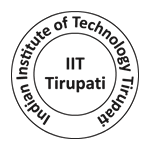
Contact address
Indian Institute of Technology Tirupati,
Tirupati - Renigunta Road,
Settipalli Post, Tirupati - 517 506, Chittoor District, A.P.
Web Address : www.iitp.ac.in
Courses Offered and the number of Seats allocated in each Branch
4 year B. Tech
INDIAN INSTITUTE OF TECHNOLOGY Dharwad (Karnataka)
Indian Institute of Technology Dharwad (IIT Dharwad) is located at the outskirts of the twin cities of Hubballi-Dharwad in the north of Karnataka. This picturesque place is located between the Western Ghats (Malenadu) and the Deccan Planes (Bayalu Seeme). Accordingly, Dharwad derives its name from the Sanskrit word "DWARAWATA". The twin cities are well known for their culture, literature and the Indian freedom movement. The historic fort of Kittur, where Rani Chennamma fought the British in 1824, is just 20 kilometers from the IIT Dharwad campus. The interim campus of IIT Dharwad is located just a few meters away from this highway. The WALMI (Water And Land Management Institute) campus of IIT Dharwad is fully equipped with class rooms, laboratories, modern hostel buildings. This campus is expected to serve the needs of IIT Dharwad for the first couple of years. The 560 acre new IIT Dharwad campus is expected to come up in a couple of years and is located two kilometers away from the Pune-Bengaluru National Highway (NH4). Mentored by IIT Bombay, the academic activities of IIT Dharwad are well tuned to bring out the best in every student.

Contact address
WALMI Campus Belur Industrial Area,
PB Road Post Mummigatti,
Dharwad-580001 Karnataka, India.
Fax : 02225723480
Web Address : www.iitb.ac.in/en/iit-dharwad
Courses Offered and the number of Seats allocated in each Branch
4 year B. Tech
INDIAN INSTITUTE OF TECHNOLOGY Goa (Goa)
The campus for the Indian Institute of Technology Goa (IIT Goa) will be developed at Loliem, a quiet town in Canacona taluka in the southernmost tip of Goa. It is bounded by Galgibag River in the North, village of Poinguinim along the East, Uttar Kannada district of Karnataka state in the South and Arabian Sea to the West. Historically, Loliem was a village of metallurgical artisans who made idols of gods and goddesses using aluminum and iron during the reign of the Kadambas of Banavasi (345 - 525 CE) and was, therefore, called Lohahalli. Subsequently, when Goa became a Portuguese colony, the name of this important village was changed to Loliem and it had a checkpost for road transit to other parts of India until 1961, when Goa was incorporated into the Indian Union.
Loliem has a unique mix of the rolling hills of the Western Ghats, the slice of the coast, and an interior hilly, plateau region. The 300 acre new IIT Goa campus is expected to come up in a couple of years and is located about 88 km south of the capital city of Panaji. However, the interim campus of IIT Goa is located at Goa Engineering College (GEC) at Farmagudi, which is about 78 km away from the proposed IIT Goa Campus site. This temporary campus of IIT Goa at GEC is fully equipped with class rooms, laboratories, and modern hostel buildings. This campus is expected to serve the needs of IIT Goa for the first couple of years. Mentored by IIT Bombay, the academic activities of IIT Goa are well tuned to expose the student to a vibrant academic culture and bring out the best in every student. The contribution of this Institute would be to educate young people to solve the real problems faced by our countrymen using the technical knowledge they are imparted during their formative years.

Contact address
Goa Engineering College Campus
"Bhausaheb Bandodkar Technical Education Complex"
Farmagudi, Ponda- Goa - India Pin-403401
Fax : 022-25723480
Web Address : www.iitb.ac.in/en/iit-goa
Courses Offered and the number of Seats allocated in each Branch
4 year B. Tech
Rajiv Gandhi Institute of Petroleum Technology
The Ministry of Petroleum & Natural Gas (MOP&NG), Government of India set up The Rajiv Gandhi Institute of Petroleum Technology (RGIPT) at Jais, Dist. Rae Bareli, Uttar Pradesh through an Act of Parliament ("Rajiv Gandhi Institute of Petroleum Technology Act 2007"). RGIPT has been accorded the eminence of being an " Institute of National Importance" along the lines of the Indian Institutes of Technology (IIT). The Institute is empowered to award degrees in its own right. RGIPT is co-promoted as an energy domain specific institute by six leading Oil Public Sector Units (ONGC, IOCL, OIL, GAIL, BPCL and HPCL) in association with the Oil Industry Development Board (OIDB) [ This however does not bind them to preferentially recruit from RGIPT ]. The Institute is associating with leading International Universities/Institutions specializing in the domain of Petroleum Technology.

Contact address
Ratapur Chowk,
Rae Bareli-229316, (U.P.), India
Web Address : www.rgipt.ac.in
Indian Institutes of Science Education and Research (IISER)
At present there are 7 IISER's in india.To promote high quality scientific education, research and training, Ministry of Human Resource Development (MHRD), Government of India, has set up seven Indian Institutes of S cience Education and Research (IISERs) at Berhampur, Bhopal, Kolkata, Mohali, Pune, Thiruvananthapuram and Tirupati. These are Autonomous Institutions under MHRD, Govt. of India.
It is a five year dual degree program for bright and motivated science students who have passed (10+2) level. The program integrates classroom learning with research and provides ample scope for multidisciplinary interactions. The first two years of the program consist of core courses in basic sciences, the third and fourth years are d edicated to specialization in chosen science subjects and the fifth year includes a research project. The training during the program enables students to pursue a career in academia, R&D institutes and science based industries.
Students qualifying any of the following examinations will be eligible for admission
- Kishore Vaigyanik Protsahan Yojana (KVPY)
- IITJEE - Those who feature in the regular merit list.
- State and Central Boards (top 1% in each board in class 12th)
.png)
Contact address
Phone : +91 (20) 2590 8001
Fax : +91 (20) 2590 8186
Web Address : www.iiseradmission.in
Courses Offered and the number of Seats allocated in each Branch
5 Year Dual Degree Program
Indian Institute of Space Science and Technology Thiruvananthapuram
IIST is Asia's first Space Institute and the first in the world to offer the complete range of undergraduate, post graduate, doctoral programmes with specific focus to space science, technology and applications.
This unique concept took root in January 2007, when IIST was registered as a Society under the Travancore -Cochin Literary, Scientific and Charitable Societies Registration Act, 1955. IIST received the approval of the Union Cabinet on 26 April, 2007 and it was formally inaugurated on 14 September 2007 by Dr. G. Madhavan Nair. In a little less than a year of its establishment, IIST received the recognition of UGC as a 'Deemed to be University' under Section 3 of UGC Act, 1956.

Contact address
Dept.of Space, Govt.of India
Valiamala P.O., Thiruvananthapuram - 695 547 Kerala, INDIA
Web Address : www.iist.ac.in
Courses Offered and the number of Seats allocated in each Branch
4 Year B.Tech
5 Year Dual Degree Programs
Indian institute of Science, Bengaluru
The Indian Institute of Science was founded in 1909 as a result of the joint efforts of Jamsetji Nussarwanji Tata, the Government of India and the Maharaja of Mysore. The Government of India decided to locate the Institute in Bengaluru, where the Maharaja of Mysore, Krishnaraja Wodeyar IV, donated over 370 acres of land for this initiative.
Students qualifying any of the following examinations will be eligible for admission
- Kishore Vaigyanik Protsahan Yojana (KVPY)
- IITJEE
- NEET
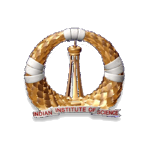
Contact address
Karnataka 560012
Web Address : www.iisc.ac.in
Courses Offered and the number of Seats allocated in each Branch
4 Year B.Sc
INDIAN INSTITUTE OF PETROLEUM & ENERGY
The Government of India, under the Andhra Pradesh Reorganization Act 2014, has agreed to establish a Petroleum University of national importance in the state of Andhra Pradesh. The State Government of Andhra Pradesh has allotted land measuring 150 acres at Anthakapalli Village, Visakhapatnam for the permanent campus of Indian Institute of Petroleum & Energy (IIPE).
A Society has been registered titled Indian Institute of Petroleum & Energy with 9 members viz., C&MD HPCL (President), Secretary-Industries & Commerce Department, AP Government, Chairman IOCL, C&MD ONGC, C&MD GAIL, C&MD Oil India Limited, ED-HR HPCL (Secretary), FA&CAO OIDB (Treasurer) and Prof K S Gandhi, Professor Emeritus, Department of Chemical Engineering, Indian Institute of Science, Bangalore.
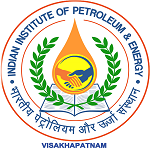
Contact address
2nd Floor, AU Engg College Main Block,
Andhra University,
Visakhapatnam-530003
Post Box No : 372
Web Address : www.iipe.ac.in